
- Subject:
- Applied Science
- Biology
- Life Science
- Material Type:
- Module
- Author:
- OpenStax College
- Date Added:
- 07/18/2021


By the end of this section, you will be able to:Identify the shared characteristics of the natural sciencesSummarize the steps of the scientific methodCompare inductive reasoning with deductive reasoningDescribe the goals of basic science and applied science
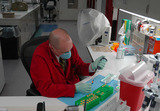
By the end of this section, you will be able to:Identify and describe the properties of lifeDescribe the levels of organization among living thingsRecognize and interpret a phylogenetic treeList examples of different sub disciplines in biology
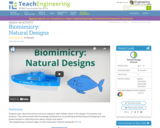
Students learn about biomimicry and how engineers often imitate nature in the design of innovative new products. They demonstrate their knowledge of biomimicry by practicing brainstorming and designing a new product based on what they know about animals and nature.
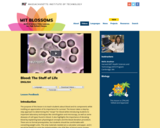
The purpose of this lesson is to teach students about blood and its components while instilling an appreciation of its importance for survival. The lesson takes a step-by-step approach to determining the recipe for blood while introducing students to important laboratory techniques like centrifugation and microscopy, as well as some diseases of cell types found in blood. It also highlights the importance of donating blood by explaining basic physiological concepts and the blood donation procedure.
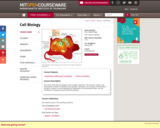
Biology of cells of higher organisms: structure, function, and biosynthesis of cellular membranes and organelles; cell growth and oncogenic transformation; transport, receptors and cell signaling; the cytoskeleton, the extracellular matrix, and cell movements; chromatin structure and RNA synthesis.
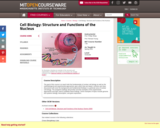
The goal of this course is to teach both the fundamentals of nuclear cell biology as well as the methodological and experimental approaches upon which they are based. Lectures and class discussions will cover the background and fundamental findings in a particular area of nuclear cell biology. The assigned readings will provide concrete examples of the experimental approaches and logic used to establish these findings. Some examples of topics include genome and systems biology, transcription, and gene expression.
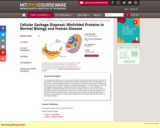
The endoplasmic reticulum (ER) orchestrates different cellular processes by which proteins are synthesized, correctly folded, modified and ultimately transported to their final destinations. As part of this crucial biosynthetic process, proteins that are not properly folded and consequently detrimental to normal cellular function are constantly generated. A common signature of many neurodegenerative diseases, including Alzheimer's and Parkinson's, is accumulation and deposition of misfolded proteins that arise when the ability of cells to deal with the burden of misfolded proteins is compromised. In this course, we will explore how the ER quality control machinery ensures that only properly assembled proteins exit the ER while distinguishing between nascent proteins en route to their biologically active folded state from those that are terminally misfolded.

The topic of this video module is how to classify animals based on how closely related they are. The main learning objective is that students will learn how to make phylogenetic trees based on both physical characteristics and on DNA sequence. Students will also learn why the objective and quantitative nature of DNA sequencing is preferable when it come to classifying animals based on how closely related they are. Knowledge prerequisites to this lesson include that students have some understanding of what DNA is and that they have a familiarity with the base-pairing rules and with writing a DNA sequence.
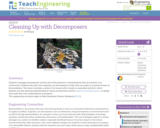
Students investigate decomposers and the role of decomposers in maintaining the flow of nutrients in an environment. Students also learn how engineers use decomposers to help clean up wastes in a process known as bioremediation. This lesson concludes a series of six lessons in which students use their growing understanding of various environments and the engineering design process, to design and create their own model biodome ecosystems.

How genetics can add to our understanding of cognition, language, emotion, personality, and behavior. Use of gene mapping to estimate risk factors for psychological disorders and variation in behavioral and personality traits. Mendelian genetics, genetic mapping techniques, and statistical analysis of large populations and their application to particular studies in behavioral genetics. Topics also include environmental influence on genetic programs, evolutionary genetics, and the larger scientific, social, ethical, and philosophical implications.
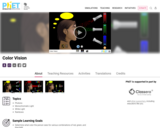
Make a whole rainbow by mixing red, green, and blue light. Change the wavelength of a monochromatic beam or filter white light. View the light as a solid beam, or see the individual photons.

Study and discussion of computational approaches and algorithms for contemporary problems in functional genomics. Topics include DNA chip design, experimental data normalization, expression data representation standards, proteomics, gene clustering, self-organizing maps, Boolean networks, statistical graph models, Bayesian network models, continuous dynamic models, statistical metrics for model validation, model elaboration, experiment planning, and the computational complexity of functional genomics problems.
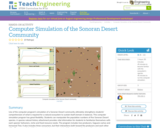
The computer program's simulation of a Sonoran desert community should ultimately strengthen the student's comprehension of what is required for a natural ecosystem to sustain itself (remain in balance). This computer simulation program has great flexibility. It allows the student to manipulate the population numbers of five Sonoran Desert species. A species natural history attachment provides vital information for the students to familiarize themselves with each species' behaviors, its niche and food resource needs. The program includes two producers, the Saguaro cactus and the Ironwood Tree. It also includes 3 consumers, but their interactions both toward the producers and each other differ. The community's ability to remain in balance and sustain all five species so that none die out rests on the student's assessment skills enabling him to correctly identify these dependencies. The student learns by trial and error as he continues to fine tune the ecosystem that he maintains stewardship of.

Used for students receiving Advanced Placement credit and transfer credit. Program of study or research to be arranged with a Department faculty member. Written report required. Permission of Department required.
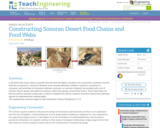
Is the food chain shown above accurate? Does the first link depict a producer, the second link a herbivore, and the third link an omnivore / carnivore? Students must correctly determine whether a species is a producer or consumer, and what type of consumer; herbivore, omnivore, or carnivore. Students are provided with a list of Sonoran Desert species and asked to construct, within their groups, several food chains. These food chains are then be used to construct a food web. In order to complete this activity, students must first research the individual species to understand their feeding habits.

With your mouse, drag data points and their error bars, and watch the best-fit polynomial curve update instantly. You choose the type of fit: linear, quadratic, cubic, or quartic. The reduced chi-square statistic shows you when the fit is good. Or you can try to find the best fit by manually adjusting fit parameters.
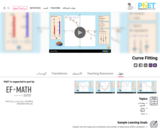
With your mouse, drag data points and their error bars, and watch the best-fit polynomial curve update instantly. You choose the type of fit: linear, quadratic, cubic, or quartic. The reduced chi-square statistic shows you when the fit is good. Or you can try to find the best fit by manually adjusting fit parameters.
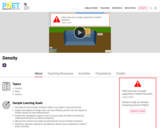
Why do objects like wood float in water? Does it depend on size? Create a custom object to explore the effects of mass and volume on density. Can you discover the relationship? Use the scale to measure the mass of an object, then hold the object under water to measure its volume. Can you identify all the mystery objects?
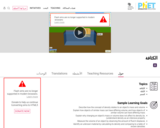
Why do objects like wood float in water? Does it depend on size? Create a custom object to explore the effects of mass and volume on density. Can you discover the relationship? Use the scale to measure the mass of an object, then hold the object under water to measure its volume. Can you identify all the mystery objects?